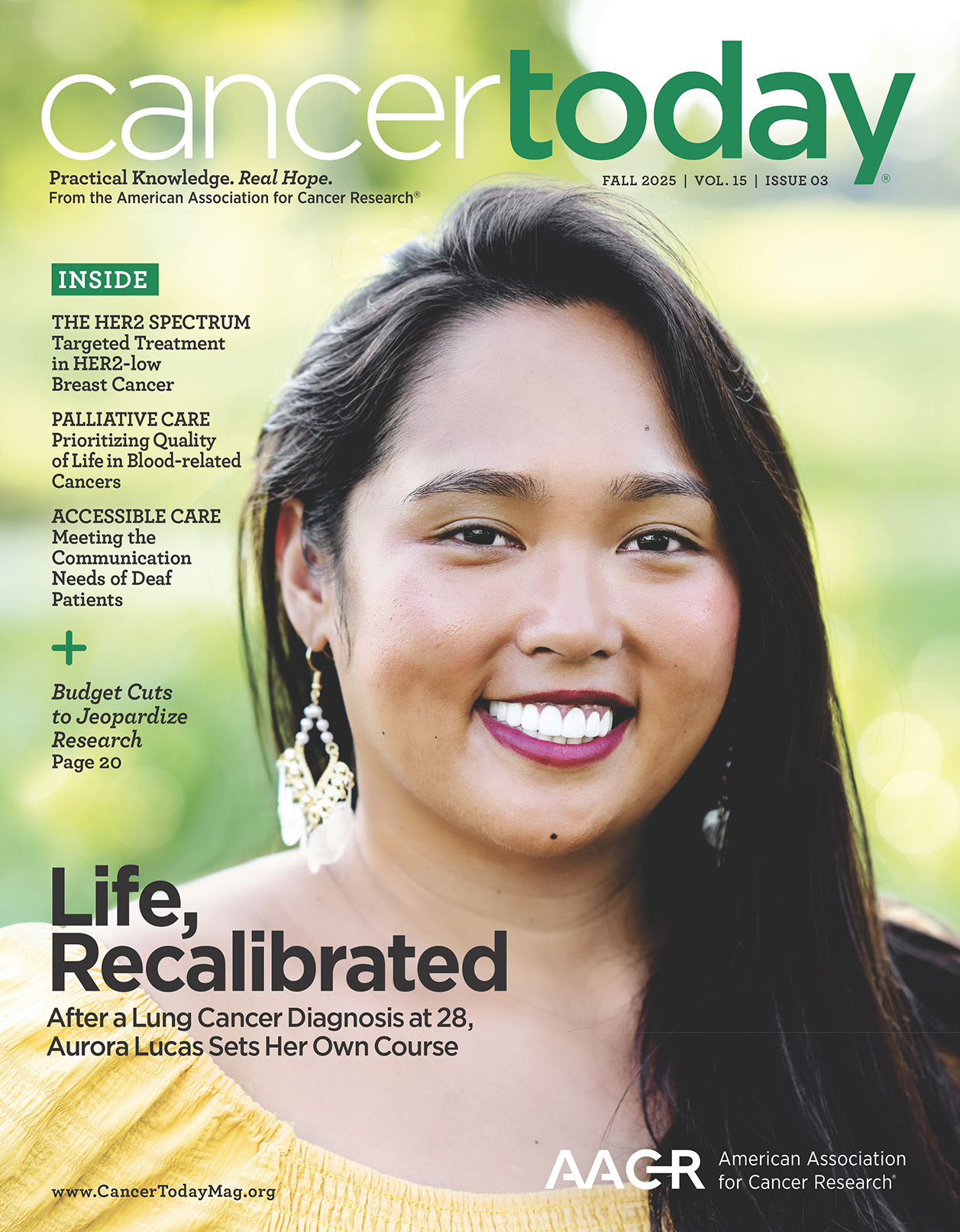Every week, the editors of Cancer Today magazine bring you the top news for cancer patients from around the internet. Stay up to date with the latest in cancer research and care by subscribing to our e-newsletter.
Uterine Cancer Rates to Rise Significantly by 2050
Uterine cancer diagnoses in the U.S. will climb substantially in the next quarter century, with Black women disproportionally dying from the disease, according to a study published in Cancer Epidemiology, Biomarkers & Prevention. From 2015 to 2019, uterine cancer incidence increased by 2% per year, and nearly 70,000 people were diagnosed with the disease in 2024, ABC News reported. Black women are more likely to be diagnosed with an aggressive form of the cancer and are twice as likely as white women to die from it, which has been attributed to delayed diagnosis and lower-quality care. Using population data, researchers projected those trends will continue across the next three decades. According to their model, uterine cancer cases in white women will rise to 74 out of 100,000—up from 58 in 2018. Meanwhile, 87 out of every 100,000 Black women will develop the disease—up from 57 in 2018. Researchers attributed rising incidence to longer lifespans, increasing obesity and fewer people having a hysterectomy, which is surgery to remove the uterus. Additionally, by 2050, Black women will be three times as likely as white women to die from uterine cancer. Experts said they hope lifestyle modifications could help reduce uterine cancer incidence and mortality. “Population-level changes in overweight and obesity, perhaps through improved access to the current generation of weight-loss medications, could lead to reductions in uterine cancer cases in the future,” Elena Elkin, a study author and a health policy researcher at the Herbert Irving Comprehensive Cancer Center in New York City, told ABC News.
Disposable E-cigarettes Give Off More Carcinogens Than Cigarettes
Some brands of disposable e-cigarettes emit more toxic metals and expose users to higher amounts of carcinogens than traditional cigarettes, according to a study published in ACS Central Science. Researchers used a machine that simulated taking 500 to 1,500 puffs of seven popular types of disposable e-cigarettes and tested what compounds they emitted. They found using some of the tested devices for a single day would expose the user to more lead than smoking almost 20 packs of cigarettes, the San Francisco Chronicle reported. Additionally, two of the vapes emitted enough of the hazardous metal antimony to increase cancer risk, while four of the vapes emitted unsafe amounts of nickel, which can cause lung and nasal cancers and neurological and respiratory damage. “Our study highlights the hidden risk of these new and popular disposable electronic cigarettes—with hazardous levels of neurotoxic lead and carcinogenic nickel and antimony—which stresses the need for urgency in enforcement,” Brett Poulin, the study’s senior author and an environmental toxicology researcher at the University of California, Davis, said in a release.
Women 65 and Older Still at Risk for Cervical Cancer
Current guidelines recommend women ages 21 to 65 receive regular cervical cancer screening to check for certain forms of the human papillomavirus (HPV), which causes most cases of cervical cancer. If previous test results have been normal and they do not have certain risk factors, women older than 65 do not need to keep getting screened. However, a study published in Gynecology and Obstetrics Clinical Medicine found women 65 and older are at high enough risk for cervical cancer to potentially merit continued screening. In the study, researchers analyzed cervical cancer screening data from 2017 to 2023 for more than 2.1 million women in China. Of the women, 17,420 were 65 or older, with the remainder being younger than 65. Researchers found 14% of women 65 and older tested positive for a high-risk HPV infection, compared with 8% of women younger than 65, the Guardian reported. Researchers noted most women in the older age group did not receive the HPV vaccine, which was introduced in the U.S. in 2006 for girls around age 11. Additionally, they said life expectancy is increasing, which gives women 65 and older more time for these infections to develop into cervical cancer. Researchers acknowledged that the study only looked at women who had screening. Since women in this older age range may have sought screening due to specific concerns or symptoms, cases of HPV infections and abnormal cells may be overrepresented.
Cancer Today magazine is free to cancer patients, survivors and caregivers who live in the U.S. Subscribe here to receive four issues per year.





